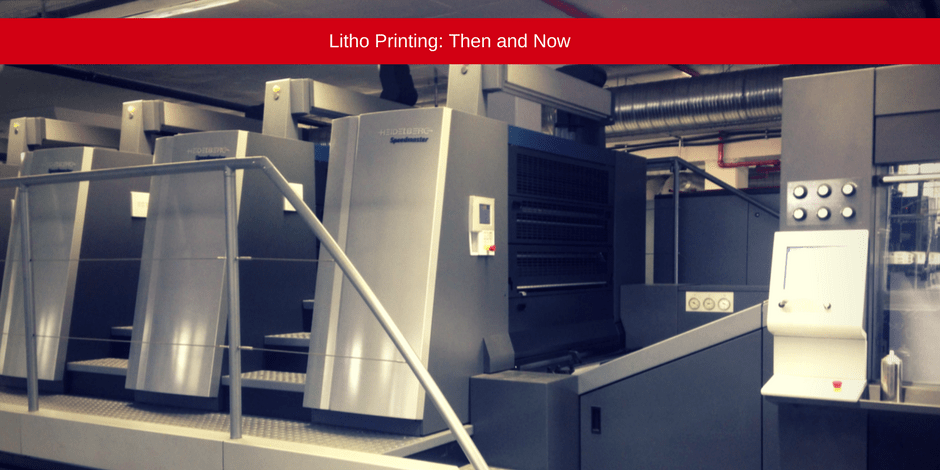litho printing for Mass Commercial Projects
litho printing for Mass Commercial Projects
Blog Article
A Comprehensive Overview to Understanding Litho Printing Methods
The globe of litho printing, a strategy originating from the late 18th century, is a remarkable mix of history, art, technology and scientific research. This thorough guide will certainly untangle the complexities of this printing technique, from the make-up of litho inks to the challenges encountered in contemporary applications. As we venture right into the details of lithography, the value of automation and sustainability in guaranteeing its future importance ends up being significantly clear. Remain with us as we trip right into the captivating realm of litho printing.
The Historical Advancement of Litho Printing
The historical trajectory of litho printing, a crucial development in the world of communication, is a captivating tale of human ingenuity. The process developed with the advent of the rotating press, which significantly increased efficiency. Each stage of litho printing's evolution showcases humankind's unrelenting pursuit of performance and top quality in aesthetic interaction.
Decoding the Science Behind Litho Printing Inks
Progressing in the expedition of litho printing methods, the emphasis now changes to the science behind litho printing inks. The composition of these inks, their drying process, and color mixing methods develop the foundation of this complex art type. Recognizing these aspects is critical to mastering the craft and achieving the desired print outcomes.
Make-up of Litho Inks
In lithographic printing, the essential role of litho inks can not be overstated. Pigments, the color-providing aspects, are finely ground particles put on hold in the lorry, a fluid that lugs the pigment onto the printing surface. Each component plays an essential part in the last print's high quality, making the exact formulation of litho inks an elaborate science.
Ink Drying Refine
From the composition of litho inks, attention turns to the remarkable process of ink drying out. The drying procedure is vital, as it affects the last print's quality and durability. Two main techniques are utilized in litho printing: oxidative drying out and absorption. Oxidative drying out entails the ink responding with oxygen airborne to form a hard, completely dry film. This technique provides a sturdy finish, yet can be slower compared to absorption. Absorption, on the other hand, involves the ink permeating into the paper fibers, which is a much faster process but can cause less dynamic colors. The option in between these techniques depends on factors such as print speed demands, the paper type utilized, and the desired coating.
Color Combining Strategies
While the drying process plays a key duty in litho printing, the science of shade blending strategies holds equal relevance. This is an intricate process that entails the cautious mixing of primaries: cyan, magenta, and yellow, in differing proportions to achieve a wide selection of colors. The addition of black ink, recognized as 'crucial', helps in regulating the intensity and deepness of the colors. The scientific research behind litho printing inks also considers the transparency of the ink, which influences exactly how colors overlay and mix. To accomplish a reliable shade mix, print experts need to additionally recognize the ins and outs of ink habits, color concept, and the physical properties of the substratum on which the ink is used.
The Art and Design Components in Litho Printing
Litho printing takes a breath life right into art and style with its distinct elements. Litho printing suits a variety of colors, allowing artists to develop lively and vibrant prints. This combination of precision and flexibility makes litho printing a preferred choice for many musicians and developers.
Modern Applications of Litho Printing Strategies
Litho printing techniques have actually found considerable use in try this out the modern business industry. Its impact and value remain to expand with the advent of new advancements and technologies in the area. This section will certainly explore these modern applications and the transformative function they play in the printing sector.
Industrial Litho Printing Uses
In today's electronic age, one might question the significance of conventional printing methods. Litho printing stays a critical part of the industrial field. High-volume printing jobs, such as the production of publications, papers, and product packaging, depend on litho printing for its capability to deliver remarkable photo high quality and cost effectiveness. The procedure, which entails transferring an inked image from a plate onto a rubber blanket and after that to the printing surface, provides unequaled uniformity. This makes it excellent for tasks needing a big print run. Litho printing additionally gives a broad shade range, above that of digital printing. This makes it the go-to option for tasks that demand vivid, top quality color reproduction.
Innovations in Litho Printing
Pushing the boundaries of traditional methods, contemporary innovations have actually fueled a host of developments in litho printing. These breakthroughs have not only enhanced the high quality and performance of litho prints but likewise broadened its application extent. One noticeable growth is digital litho printing, which incorporates the merits of digital technology with litho's high-quality outcome. This hybrid design uses faster configuration times, reduced waste, and makes it possible for on-demand printing. An additional notable improvement is the introduction of environmentally pleasant inks. These inks, made from vegetable or soy-based remedies, have actually dramatically minimized the industry's ecological effect. litho printing. Furthermore, the advancement of advanced plate modern technology has streamlined the printing procedure, causing sharper photos and enhanced shade fidelity. These technologies highlight the enduring importance of litho printing in the contemporary globe.
Exploring the Process of Litho Printing: Step by Action

Difficulties and Solutions in Contemporary Litho Printing

Despite the accuracy and practice that litho printing happily supports, it is not without its set of contemporary challenges. Digital litho printing permits for economical brief runs and very easy personalization, dealing with the issue click this of variable information. Therefore, while there are challenges, the litho printing sector is proactively adjusting to fulfill them head-on, ensuring its importance in the future.
Final thought
In verdict, litho printing, with its rich background and scientific complexities, holds a considerable place in the print industry. The future of litho printing hinges on its capability to adjust to these transforming demands, verifying its enduring value in an evolving market.

Report this page